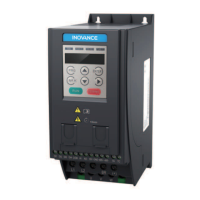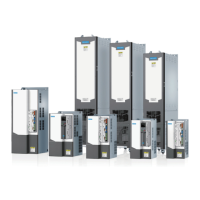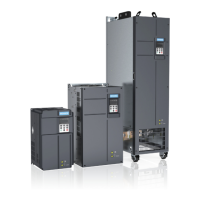Function Application
‑522‑
Calculation
Method
Main Frequency
Source Selection
Auxiliary Frequency
Source Selection
Description
Single
frequency
source
Any Any
1. When digital setting is used, UP/DOWN adjustment is
invalid, and the initial frequency value is F0‑08.
2. PID is invalid if used.
3. Simple PLC is invalid if used.
4. When digital setting is used for both main and
auxiliary frequency references, the main frequency
reference is valid, the auxiliary reference is invalid, and
UP/DOWN adjustment is valid.
Digital setting
‑
1. UP/DOWN adjustment is valid.
2. Output: Main frequency value + UP/DOWN
adjustment
3. UP/DOWN adjustment range: (Frequency upper limit
‑ Main frequency) to (Frequency lower limit ‑ Main
frequency)
4. UP/DOWN adjustment cannot reverse the frequency
direction.
PID ‑
1. The frequency lower limit is invalid.
2. PID output range: PID output lower limit to
frequency upper limit
3. When reverse running is inhibited and the PID output
lower limit is set to a negative value, 0 is the PID output
lower limit.
Other sources None
Para. No. Function Default
Value Range
F0‑05
Range selection of auxiliary frequency
source Y upon superposition
0
0: Relative to max. frequency
1: Relative to main frequency
reference
F0‑06
Range value of auxiliary frequency reference
Y upon superposition
100% 0% to 150%
These two parameters are used to limit the range of the auxiliary frequency and
active only when “Main frequency + Auxiliary frequency” applies.
Para. No. Function Default
Value Range
F0‑27
Main frequency coefficient
10.00% 0.00% to 100.00%
F0‑28
Auxiliary frequency
coefficient
10.00% 0.00% to 100.00%
These two parameters are used only in calculation of Main frequency x Auxiliary
frequency. Assume that the main frequency is Frq1, and the auxiliary frequency is
Frq2, the target frequency is calculated as follows:
Frq = (Frq1 x F0‑27) x (Frq2 x F0‑28)

